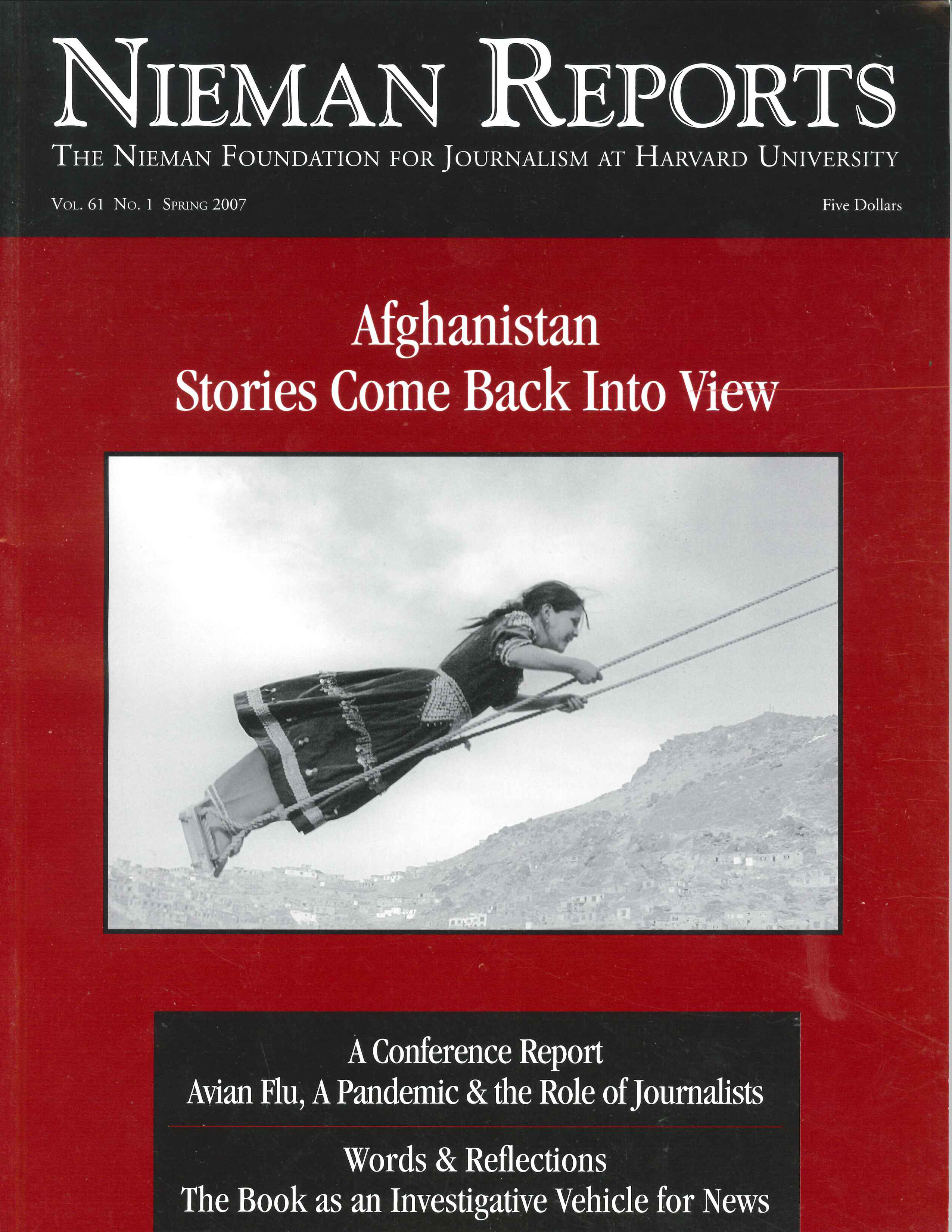When I joined Aïna Photo, I was its oldest member (at 40), and I probably still am. I was the only person to successfully film a documentary on the Taliban among the Hazara minority located in central Afghanistan. I spent seven months in prison for “photograph related crimes.” Had the Taliban discovered my film, I would have certainly been sentenced to death. I am now working as deputy assistant editor and photographer for two weekly Afghan magazines, Kallid and Morsell. Kallid focuses on current affairs, while Morsell is a magazine that explores women’s issues in post-Taliban Afghanistan.
Photos by Najibullah Musafer/Courtesy of Aïna Photo/Afghanistan.
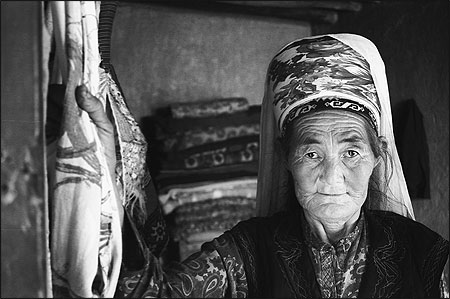
Gullbbibi is a carpet weaver for her family’s business, a passion that she has only been able to pursue since the fall of the Taliban. Her husband died in the war with the Soviet Union. The freedom to photograph women has come about since the fall of the Taliban. Afghanistan 2004.
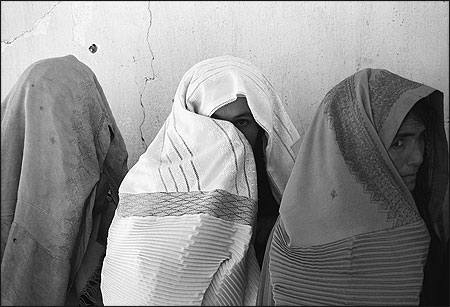
These women are in line to have the only doctor in the area examine them for illnesses related to the extreme cold weather. Many of the Hazara women lost their husbands to the war. Bamian, Afghanistan. 2004.
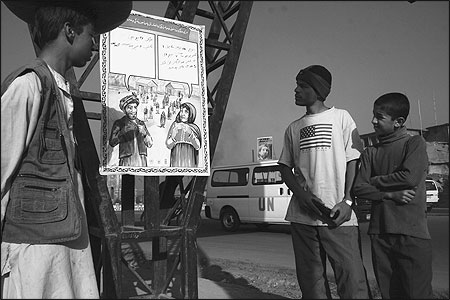
Young boys, who work on the street selling phone cards, look at the first Afghan direct presidential election poster being displayed on a street pole. October 2004.
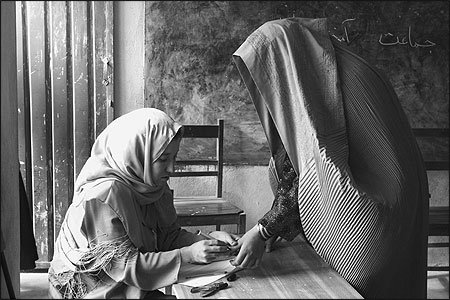
In a separate place from the men in the Dasht-i-Barchi polling station in Kabul, an Afghan woman votes in the first direct presidential election on October 9, 2004. To prevent multiple voting, an employee of UNAMA (United Nations Assistance Mission in Afghanistan) — the woman on the left — stains the voter’s thumb with ink and makes a hole in the voting cards. Kabul, Afghanistan.
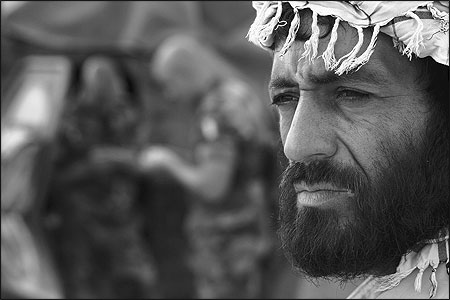
A Kuchi (nomad) man watches as members of the International Security Assistance Force distribute vaccines meant to stop a virus spreading through the tribe’s flock.


